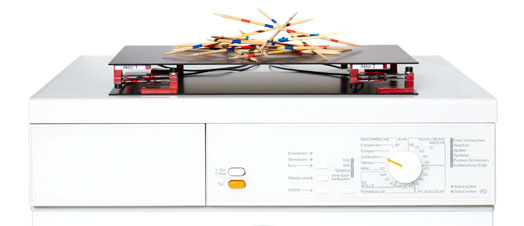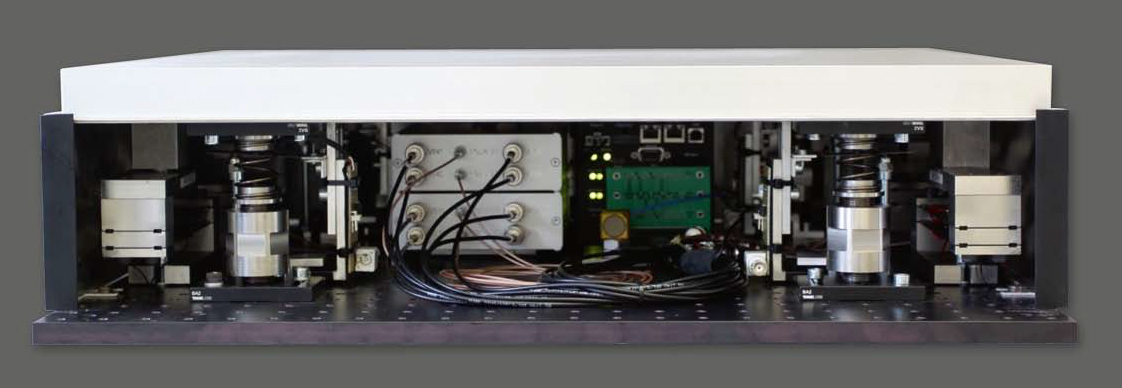Apart from the negative effect they have on human health, vibrations and noise may also be the cause of mechanical damage, functional degradation or diminished performance of machines and equipment. One specific area of application, in which even extremely small vibrations may have a substantial effect is the operation of high-precision analysis or production equipment such as scanning electron microscopes.
Quiet zones in noisy areas – active vibration control
Active vibration control systems
One option when it comes to reducing vibration is the suppression of their transmission from one place to another – e.g. by means of spring damping elements. To achieve this, you can either protect the environment from the effects of vibrating machinery (source isolation), or you can isolate sensitive equipment from its environment (receiver isolation). The level of vibration control achieved by using passive systems may be further enhanced by integrating active approaches. To this effect, the mechanical system is enhanced with actua-tors, sensors and a control loop. Frequently, piezo ceramic materials are used for the actua-tor and sensor components.
Fraunhofer LBF pursues and develops, both within the framework of public research projects and in bilateral partnerships, new approaches and technical solutions for vibration control to meet diverse requirements. Long-standing cooperation with a variety of industrial partners has resulted in systems, which significantly expand the spectrum of applications for vibration control equipment. Specific examples are mounting systems for sensitive equipment or optical communication over large distances.
The reduction of excitations introduced into sensitive measuring and production equipment places high demands on the solutions used. On the one hand, the vibration control elements have to be effective from a very low frequency, on the other hand, their sensors have to provide the capability of detecting even the smallest acceleration. A possible solution consists in the use of a functionally integrated bending-spring mounting element, combining structural, actuator and sensor features in a single device. Due to their modular design, several mounting elements can be flexibly combined into a network. This flexibility is further enhanced by the use of appropriate amplifier and control electronics. The effectiveness of these systems has been validated by means of integrated prototypes.
 Fraunhofer Institute for Structural Durability and System Reliability LBF
Fraunhofer Institute for Structural Durability and System Reliability LBF
